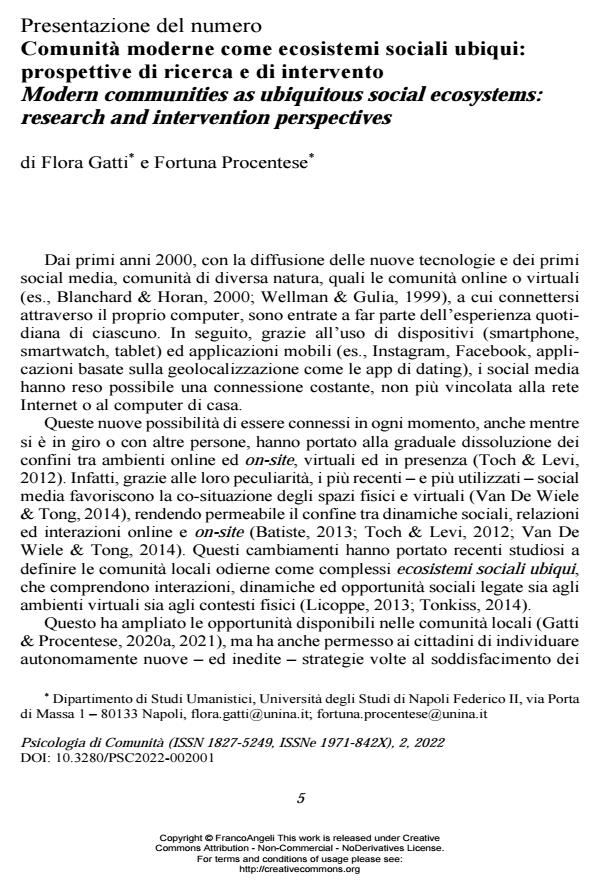Comunità moderne come ecosistemi sociali ubiqui: prospettive di ricerca e di intervento Modern communities as ubiquitous social ecosystems: research and intervention perspectives
Titolo Rivista PSICOLOGIA DI COMUNITA’
Autori/Curatori Flora Gatti, Fortuna Procentese
Anno di pubblicazione 2022 Fascicolo 2022/2
Lingua Italiano/Inglese Numero pagine 5 P. 5-9 Dimensione file 136 KB
DOI 10.3280/PSC2022-002001
Il DOI è il codice a barre della proprietà intellettuale: per saperne di più
clicca qui

FrancoAngeli è membro della Publishers International Linking Association, Inc (PILA)associazione indipendente e non profit per facilitare (attraverso i servizi tecnologici implementati da CrossRef.org) l’accesso degli studiosi ai contenuti digitali nelle pubblicazioni professionali e scientifiche
Flora Gatti, Fortuna Procentese, Comunità moderne come ecosistemi sociali ubiqui: prospettive di ricerca e di intervento Modern communities as ubiquitous social ecosystems: research and intervention perspectives in "PSICOLOGIA DI COMUNITA’" 2/2022, pp 5-9, DOI: 10.3280/PSC2022-002001